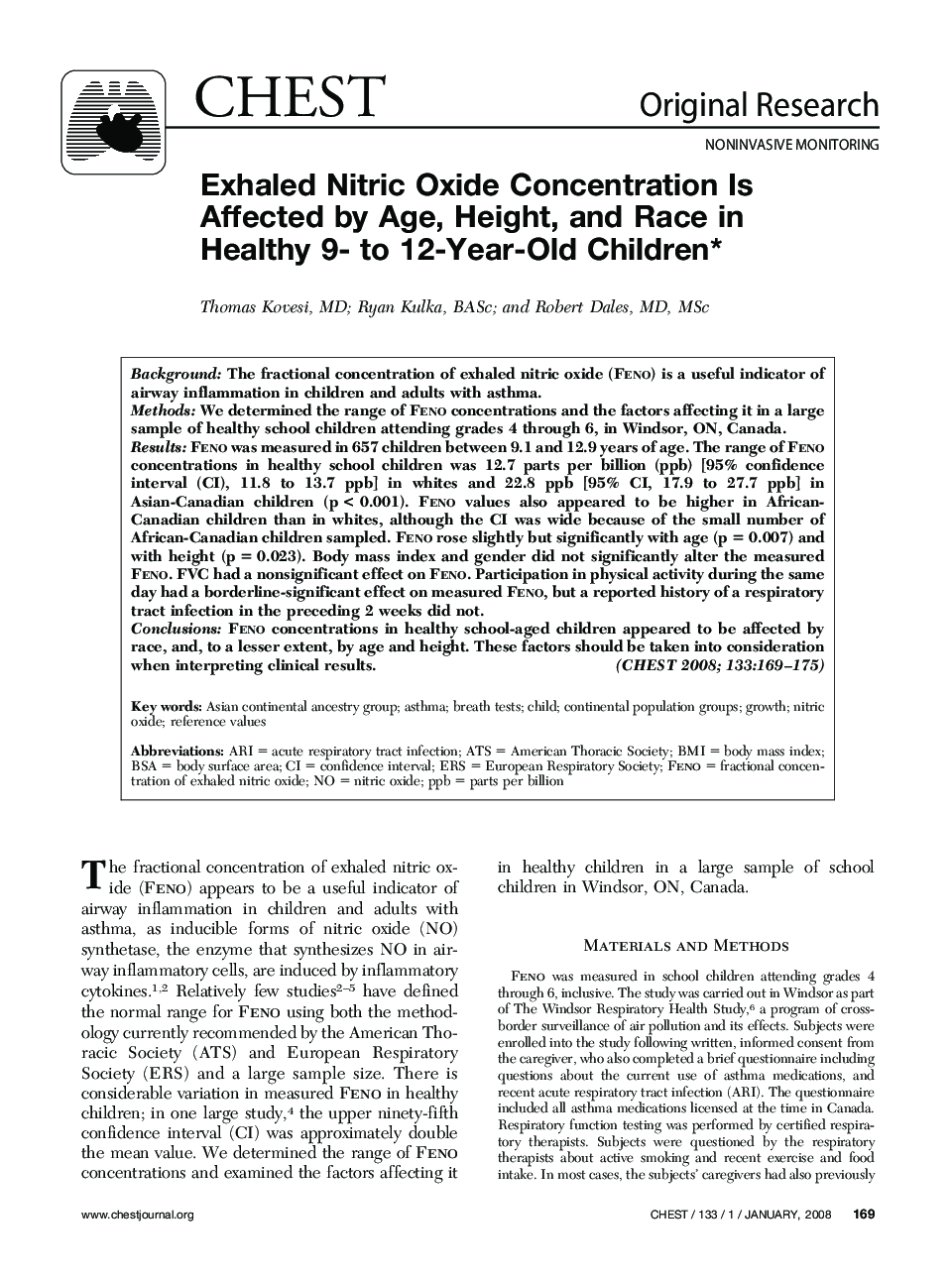| Article ID | Journal | Published Year | Pages | File Type |
|---|---|---|---|---|
| 2904093 | Chest | 2008 | 7 Pages |
BackgroundThe fractional concentration of exhaled nitric oxide (Feno) is a useful indicator of airway inflammation in children and adults with asthma.MethodsWe determined the range of Feno concentrations and the factors affecting it in a large sample of healthy school children attending grades 4 through 6, in Windsor, ON, Canada.ResultsFeno was measured in 657 children between 9.1 and 12.9 years of age. The range of Feno concentrations in healthy school children was 12.7 parts per billion (ppb) [95% confidence interval (CI), 11.8 to 13.7 ppb] in whites and 22.8 ppb [95% CI, 17.9 to 27.7 ppb] in Asian-Canadian children (p < 0.001). Feno values also appeared to be higher in African-Canadian children than in whites, although the CI was wide because of the small number of African-Canadian children sampled. Feno rose slightly but significantly with age (p = 0.007) and with height (p = 0.023). Body mass index and gender did not significantly alter the measured Feno. FVC had a nonsignificant effect on Feno. Participation in physical activity during the same day had a borderline-significant effect on measured Feno, but a reported history of a respiratory tract infection in the preceding 2 weeks did not.ConclusionsFeno concentrations in healthy school-aged children appeared to be affected by race, and, to a lesser extent, by age and height. These factors should be taken into consideration when interpreting clinical results.
